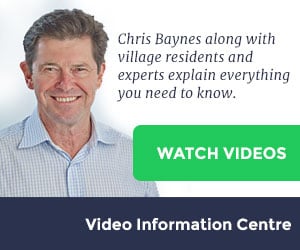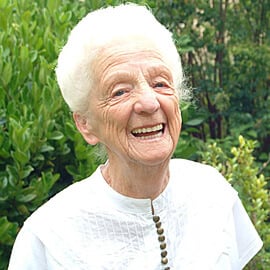Good vision plays an essential part in our quality of life. It affects everything, from our work and family, to reading, watching television and driving. Once we reach 50, even if there is nothing obviously wrong, regular annual examinations will ensure the continued quality of our sight - and of our lives.
More than 50 percent of Australia's population have eye-related problems of one kind or another and, as you might expect, the incidence of serious eye disorders increases dramatically with age. Regular check-ups by optometrists or ophthalmologists (eye surgeons) are vital, especially as some eye disorders do not show any dramatic early symptoms but can lead to blindness if left undiagnosed and untreated.
Indeed, some people with serious eye diseases do not even realise there is anything wrong until their eyes have suffered irreversible damage or blindness.
The most common - and potentially dangerous eye conditions include:
1. Cataracts. If left untreated, they can cause blindness. These are cloudy areas that form in the lens of the eye and result in hazy vision, similar to that of looking through a dirty window. They are mostly the result of ageing and long-term exposure to intense ultraviolet sunlight. Cataracts should be removed, as their effect on eyesight can get worse as larger areas are increasingly covered. Removal procedures nowadays are common and involve relatively minor surgery; the damaged lens is replaced with an intra-ocular plastic lens. Surgery is performed on an out-patient basis, enabling you to go home the same day.
2. Glaucoma. There are no symptoms for this condition until permanent damage has occurred - leading to blindness if untreated. Glaucoma is caused when the nerve cells that transmit information from the eye to the brain are damaged. The exact causes of Glaucoma are unknown but early detection techniques and treatment have made the disease a rare cause of blindness in Australia. Diagnosis, performed by an optometrist, is simple and painless. Treatment consists of eye drops and medicine initially, but can involve surgery if the blockage in the drainage system cannot be removed in other ways.
3. Macular Degeneration (ARMD). Macular Degeneration is an age-related disease brought on by degeneration or breakdown of the macula, a very small part of the retina responsible for central vision and for seeing fine detail. Unless it is detected early, treatment can be difficult: unlike body tissues, skin or bones, which have the capacity to regrow, nerve cells cannot regenerate. While there is little that can be done to prevent or cure ARMD, there are many ways patients can be helped to continue functioning normally. Special help via low vision devices is available; your eyecare specialist will be able to advise you on a range of solutions.
Less serious but very common is -
4. Pterygium (pronounced te-ri-gi-um). Although not dangerous, this disease can be unsightly and can cause a degree of discomfort. Its cause is strongly associated with ultraviolet radiation and tends to be more dominant in hot, dry climates. But anyone who spends a great deal of time outdoors can be prone to it. Pterygium is caused by a triangular growth between the conjunctiva (the thin membrane covering the white of the eye) and the cornea. In cases where it is not actively growing on the cornea, protecting the eyes from UV exposure will often stabilise it. However, if the disease is threatening to distort vision, it can be removed via a simple surgical procedure under local anaesthetic.
Vision problems not caused by specific eye diseases that can easily be corrected are:
5. Myopia (short-sightedness) and Hyperopia (long-sightedness) are called refractive errors, which commonly occur when the image a person is looking at is not properly focussed onto the retina. The result is an image that will be blurred - just like an out-of-focus photograph. Spectacles, contact lenses or surgical procedures, such as laser sight correction, can remedy these errors.
6. Astigmatism and Presbyopia are less common disorders. Your eyecare professional will be able to recommend appropriate treatments.
If you notice any change in the quality of your vision, have your eyes examined immediately.
Focus on your eyes
- We take our eyes for granted, but shouldn't after 50.
- Eye and vision disorders increase with age.
- The sun causes a lot of eye damage for Australians.
- Common eye disorders, if undetected, can cause irreversible damage and blindness.
- Glaucoma can cause blindness but can be cured if detected early.
- Macular Degeneration - is difficult to detect and treat and will cause permanent damage.






